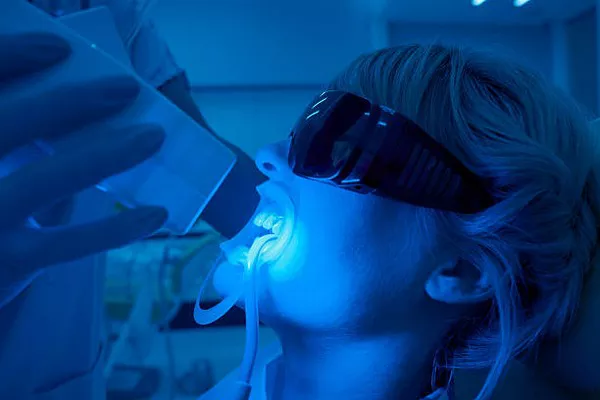The removal of wisdom teeth, or third molars, is a common dental procedure, particularly for young adults. Post-operative care is crucial for a smooth recovery, and one of the most significant aspects of this care is managing your diet. Knowing what to eat and what to avoid can make a substantial difference in your healing process and overall comfort. This article provides comprehensive guidance on how to eat after wisdom teeth removal, including rest and recovery tips, suitable foods, preparation techniques, and more.
Importance of Rest and Recovery
Rest and recovery are paramount following wisdom teeth removal. Allowing the surgical area to heal properly is essential for preventing complications such as dry socket, infection, and prolonged pain.
Rest is Crucial: After your surgery, your body needs time to heal. Resting helps reduce the risk of post-operative complications. Avoid strenuous activities and keep your head elevated while resting to minimize swelling.
Successful Recovery: Proper rest and care ensure a successful recovery. By adhering to your dentist’s instructions and allowing your body to heal, you can expedite the recovery process and return to normal activities sooner.
Soft Foods for the First Few Days
In the initial days following surgery, it is crucial to consume soft and bland foods to avoid irritating the surgical sites and ensure comfort.
Cold Foods: Cold foods can help soothe the surgical area and reduce swelling. Suitable options include:
Yogurt: Choose plain or lightly flavored yogurt to avoid added sugars that might irritate the wounds.
Ice Cream: Soft, non-chunky ice cream can provide relief and is easy to eat.
Pudding: Smooth and creamy, pudding is a perfect post-surgery treat.
Applesauce: This smooth option is easy to swallow and gentle on the surgical sites.
Smoothies: Blended fruits and vegetables make a nutritious and easy-to-consume option. Avoid using a straw initially to prevent dislodging blood clots.
Cold Soup: Opt for clear, cold soups like gazpacho to stay hydrated and nourished.
Soft Cooked Foods: Warm, soft foods are also excellent choices. Consider:
Mashed Potatoes: These are filling and easy to eat. Avoid adding lumps or chunks.
Cooked Rice: Soft, well-cooked rice is gentle on the mouth.
Oatmeal: Ensure it is cooked to a smooth consistency.
Soft Pasta: Overcooked pasta can be easier to chew.
Scrambled Eggs: Softly cooked eggs provide protein and are gentle on the mouth.
Other Options
Soft Bread: Choose the crustless part of the bread to avoid any hard edges.
Mashed Beans: Smoothly mashed beans offer a protein-rich option.
Tofu: Soft tofu is easy to consume and can be seasoned to taste.
See Also: Do You Brush Your Teeth After Getting Wisdom Teeth Removed
Gradually Introducing Solids
As your healing progresses, you can begin to reintroduce firmer foods into your diet. This should be done gradually to avoid disturbing the healing sites.
Days 3-5: Start incorporating slightly firmer foods, such as:
Soft Fruits: Bananas and avocados are ideal as they are easy to chew and swallow.
Days 5-7: Add more variety to your diet with:
Cooked Vegetables: Softly cooked vegetables like carrots, zucchini, and squash are nutritious and easy to eat.
Soft Meats: Ground meats or soft-cooked chicken can be added carefully.
After a Week: Slowly return to a regular diet, but continue to avoid hard, crunchy, or chewy foods until your dentist gives you the all-clear.
Food Preparation Tips
Proper food preparation can make eating more comfortable and protect the surgical site from irritation.
Small, Bite-Sized Pieces: Cut your food into small, manageable pieces to minimize the amount of chewing required.
Chewing on the Opposite Side: Focus on chewing away from the extraction sites to avoid disrupting the healing process.
Using a Straw: Initially, it’s best to avoid using a straw as the suction can dislodge blood clots. Once safe, a straw can help keep liquids away from the surgical area.
Foods to Avoid
Certain foods should be avoided during the healing process to prevent irritation, discomfort, and complications.
Hard, Crunchy Foods: These can damage the surgical sites and include:
- Nuts
- Seeds
- Chips
- Popcorn
- Hard bread
Chewy Foods: These require significant effort to eat and can disturb the healing areas. Avoid:
- Tough meats
- Chewy candy
- Gum
Spicy Foods: Spices can irritate the surgical sites and should be avoided. This includes:
- Chili
- Pepper
- Hot sauces
Acidic Foods: These can cause pain and irritation at the extraction sites. Steer clear of:
- Citrus fruits
- Tomatoes
- Vinegar
Hydration and Nutrition
Staying hydrated and consuming nutrient-rich foods are critical for your recovery.
Hydration: Drink plenty of fluids, such as water, clear broths, and diluted fruit juices. Proper hydration helps maintain overall health and supports the healing process.
Nutrient-Rich Foods: Focus on foods that are high in vitamins and minerals to aid in recovery. Protein, in particular, is important for tissue repair and regeneration.
Pain Management
Managing pain effectively is an important part of the recovery process.
Medication: Follow your dentist’s prescribed pain medication regimen. This will help manage discomfort and allow you to rest and recover more effectively.
Cold Compresses: Applying cold compresses to your face can help reduce swelling and numb the area, providing relief from pain. Use cold packs for 15-20 minutes at a time.
Consult with a Dentist
While this guide provides general recommendations, it’s essential to consult your dentist for personalized advice based on your specific situation. Your dentist can provide detailed instructions and monitor your recovery, ensuring the best possible outcome.
Conclusion
Eating after wisdom teeth removal requires careful planning and attention to ensure a smooth and successful recovery. Prioritize rest and hydration, consume soft and nutrient-rich foods, and gradually reintroduce solids as your healing progresses. Avoid foods that can irritate the surgical sites and manage pain effectively with prescribed medications and cold compresses. Always consult with your dentist for personalized guidance and support during your recovery journey. By following these guidelines, you can promote optimal healing and return to your normal diet and activities with minimal discomfort.
You Might Be Interested In




























